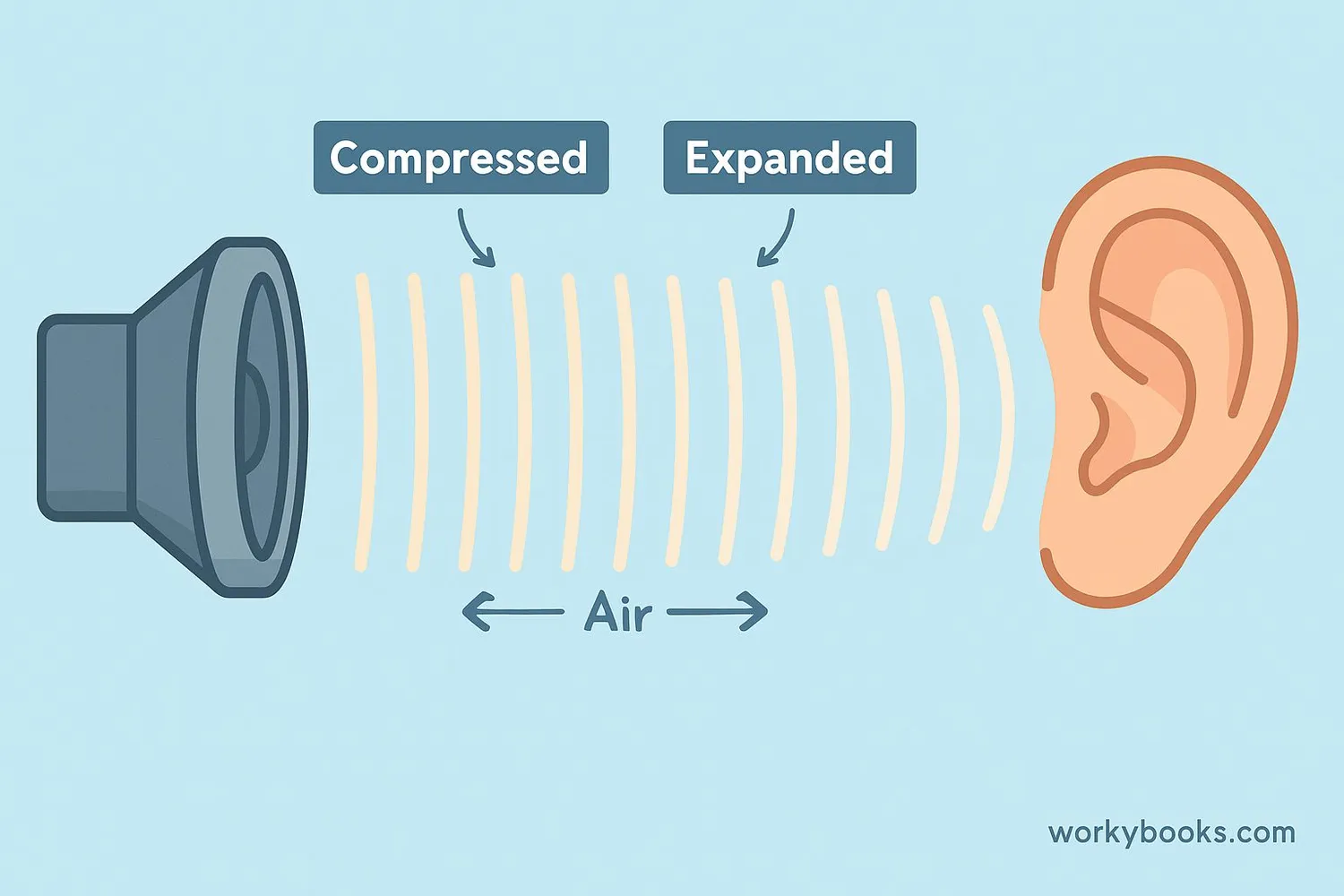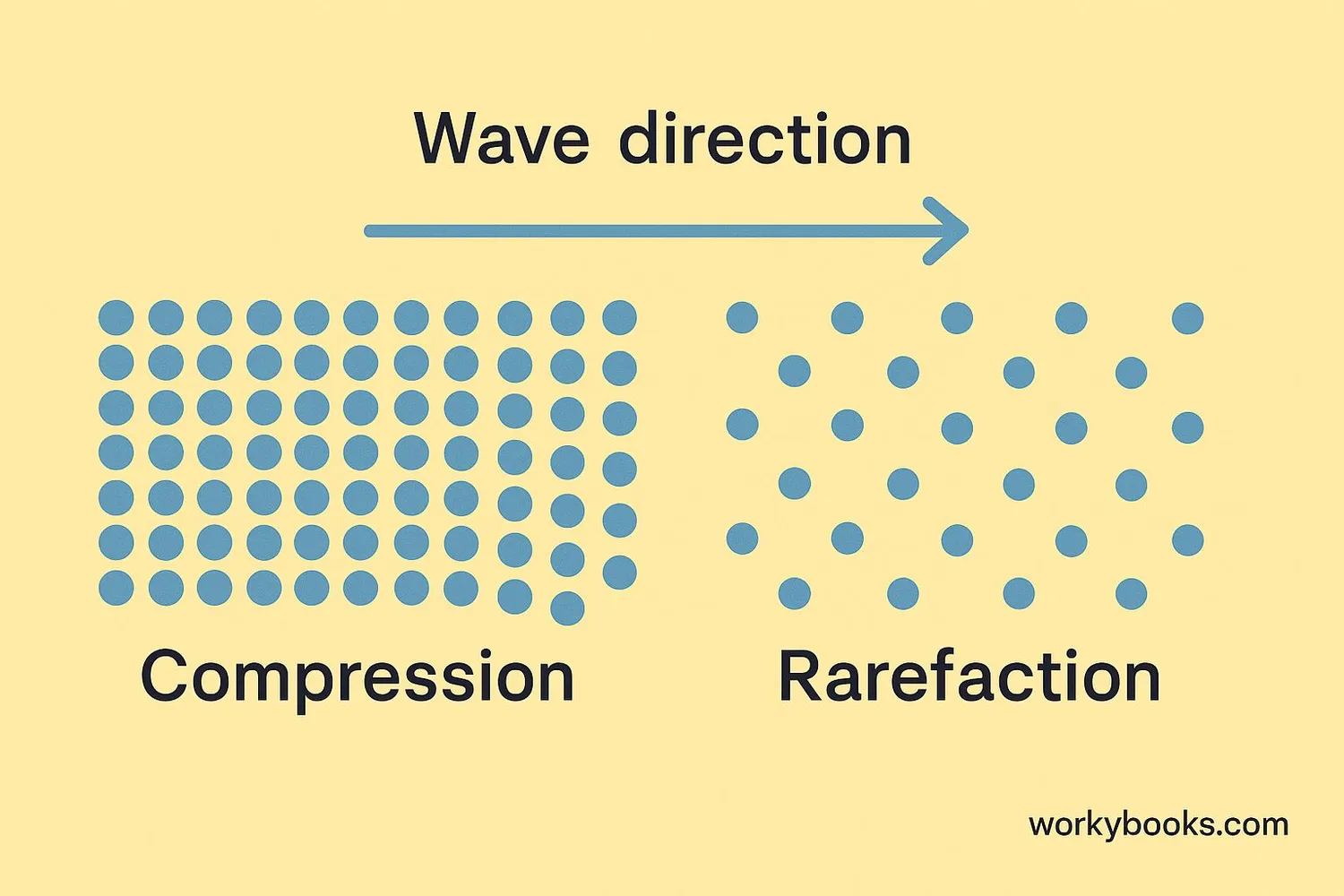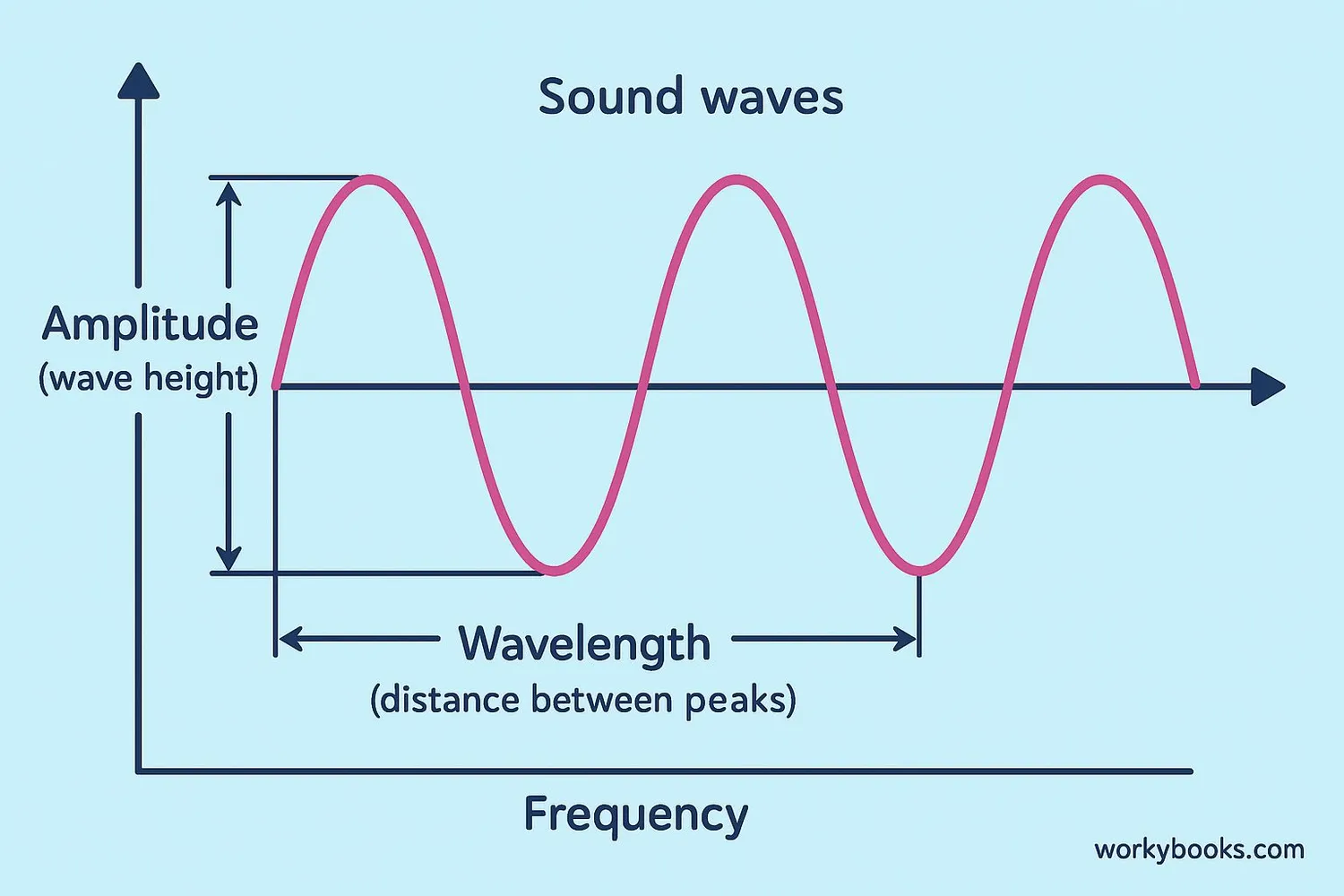Sound Waves - Definition, Examples, Quiz, FAQ, Trivia
Learn how vibrations create the sounds we hear every day
What Are Sound Waves?

Sound waves are vibrations that travel through air, water, or solids that we can hear with our ears. When something vibrates (like a guitar string or your vocal cords), it pushes air molecules together and pulls them apart, creating waves that travel to our ears.
These waves are called longitudinal waves because the air molecules move back and forth in the same direction the wave is traveling. Sound needs a medium (like air, water, or a solid) to travel through - that's why there's no sound in space where there's no air!
Science Fact!
The speed of sound in air is about 767 miles per hour (1,235 km/h) - that's faster than a jet plane!
How Sound Waves Work

Sound waves work through two important parts:
Compression: When air molecules are pushed close together
Rarefaction: When air molecules spread far apart
These alternating compressions and rarefactions move outward from the sound source like ripples in a pond. When they reach your ear, your eardrum vibrates, and your brain interprets these vibrations as sound.
Vibration
An object vibrates (like a drum skin or vocal cords)
Compression
Air molecules are pushed together
Rarefaction
Air molecules spread apart
Wave Travel
The pattern travels through air as a sound wave
Hearing
Your eardrum vibrates and your brain hears sound
Did You Know?
Sound travels faster in water (about 4 times faster than in air) and even faster in solids like steel!
Properties of Sound Waves

Sound waves have three main properties that affect what we hear:
Amplitude
How tall the wave is - determines volume (loudness)
Wavelength
Distance between wave peaks - affects pitch
Frequency
Number of waves per second (measured in Hertz) - determines pitch
High frequency sounds have short wavelengths and high pitches (like a whistle).
Low frequency sounds have long wavelengths and low pitches (like a drum).
Large amplitude waves are loud, small amplitude waves are quiet.
Human Hearing Range
Humans can hear sounds from about 20 Hz (very low) to 20,000 Hz (very high). Dogs can hear even higher frequencies, which is why they can hear dog whistles that we can't!
Sound Waves Quiz
Test your sound wave knowledge with this quiz. Answer all 5 questions to see how much you've learned.
Frequently Asked Questions
Here are answers to common questions about sound waves:
Sound Wave Trivia
Discover some amazing facts about sound waves:
Speed Record
Sound travels fastest in diamond - about 35 times faster than in air! That's because sound moves quicker in stiffer, denser materials where molecules are tightly packed.
Animal Hearing
Elephants can communicate using infrasound (sounds too low for humans to hear) that travels for miles through the ground! They detect these vibrations through their feet.
Space Sounds
While space itself is silent, planets and stars emit radio waves that scientists can convert into sound. Jupiter's magnetic field sounds like eerie ocean waves when converted!
Ear Protection
Your ears have tiny muscles that contract to protect against loud sounds. This reflex takes just 1/10th of a second - faster than you can blink!





